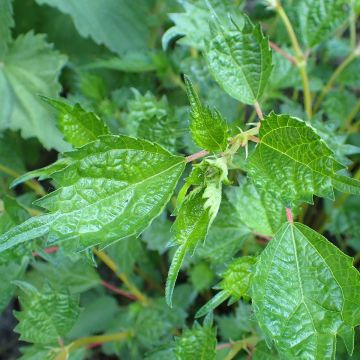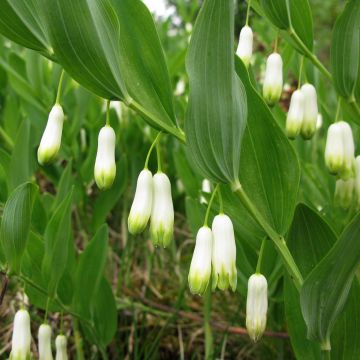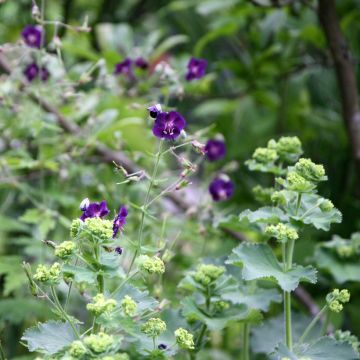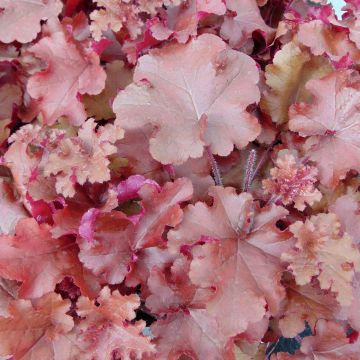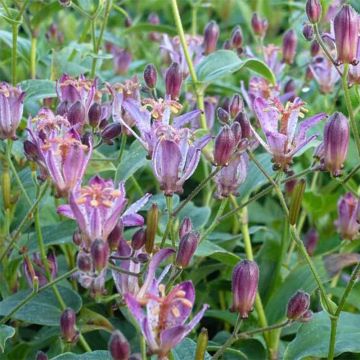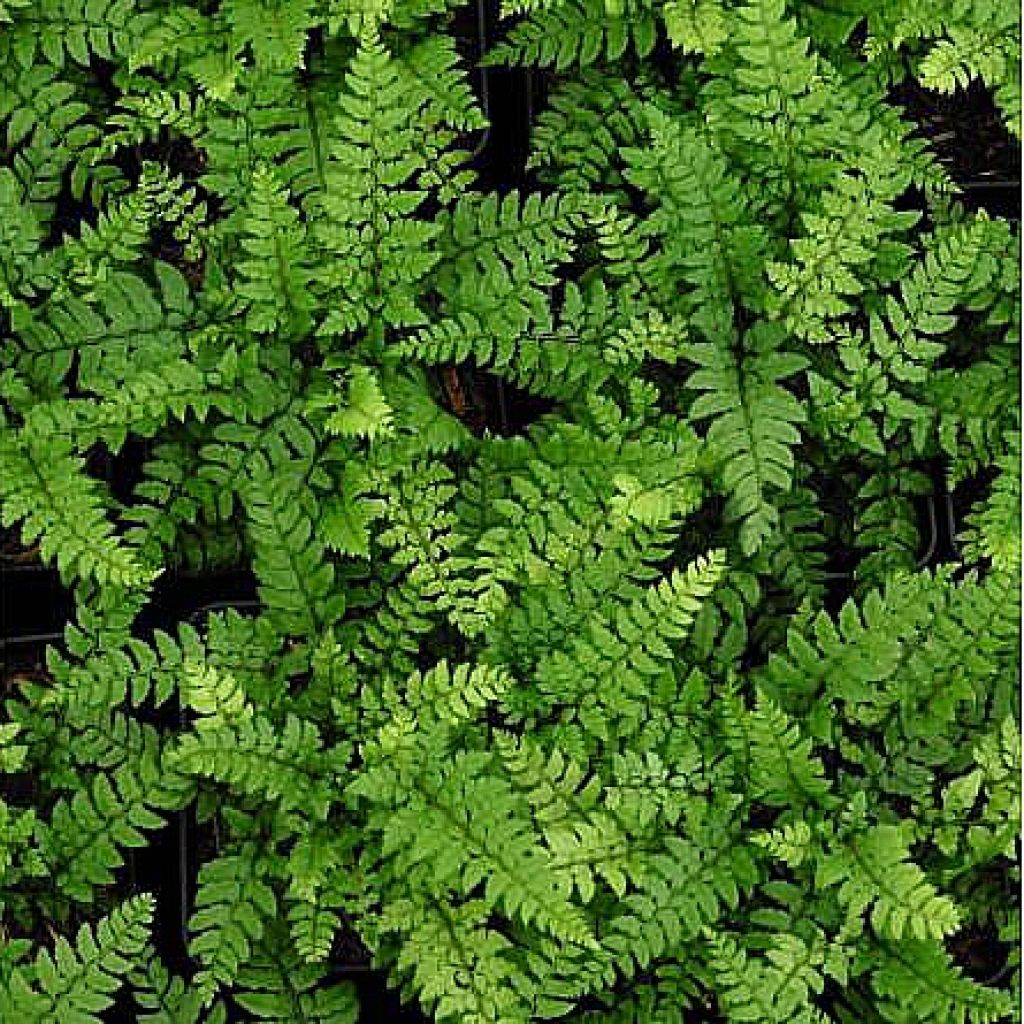

Polystichum makinoi - Fougère persistante
Polystichum makinoi - Makino's Holly Fern
Polystichum makinoi
Makino's Holly Fern
This item cannot be shipped to the selected country
Delivery charge from €5.90
More information
Schedule delivery date,
and select date in basket
This plant carries a 12 months recovery warranty
More information
We guarantee the quality of our plants for a full growing cycle, and will replace at our expense any plant that fails to recover under normal climatic and planting conditions.
From €5.90 for pickup delivery and €6.90 for home delivery
Express home delivery from €8.90.
Does this plant fit my garden?
Set up your Plantfit profile →
Description
Polystichum makinoi is a very beautiful Asian fern, evergreen in winter, which forms a well-regulated clump. Its glossy fronds are remarkably carved, and their olive-green colour contrasts well with the brown rachis and petioles. Of medium size, this species is particularly elegant and very hardy, and its cultivation poses no difficulty in humus-rich, well-drained and moist soil. A true adornment for shade or partial shade, this polystichum also offers a very beautiful foliage to enhance bouquets.
Polystichum makinoi belongs to the Dryopteridaceae family. It is a botanical species native to East Asia, found in Bhutan, China, India, Japan, Nepal, Tibet, North and South Korea, and Myanmar. The plant has a short, ascending and scaly rhizome, from which numerous leaves called fronds emerge. It eventually forms a beautiful clump with a slightly spreading and harmonious habit, reaching about 45 to 55 cm (18 to 22 in) in height and 40-50 cm (16-20 in) in width. The fronds, of an elongated triangular shape, measure 25 to 60 cm (10 to 24 in) in length and 10 to 20 cm (4 to 8 in) in width. They have a fairly rigid texture. Their lamina is bipinnate, divided into shiny and dentate pinnae, each with a small petiole. The colour of the young foliage is a very bright green, while the mature fronds turn olive-green. Each frond is borne on a petiole measuring 10 to 40 cm (4 to 16 in) in length, which extends into the main vein, the rachis, running through the entire lamina. The petioles and rachis are covered with brown scales of varying darkness.
Polystichum makinoi is an excellent border plant, for light and fresh undergrowth or shaded flower beds. It adapts very well to any moist soil enriched with leaf compost, even on a slightly calcareous subsoil. It can be associated with other ferns, Solomon's seals, Asarum, or with Asian undergrowth plants that deserve to be discovered, such as the isodons.
Report an error about the product description
Flowering
Foliage
Plant habit
Botanical data
Polystichum
makinoi
Aspleniaceae
Makino's Holly Fern
East Asia
Other Polystichum
Planting and care
Install Polystichum makinoi in a shady or semi-shady position; the soil should remain slightly moist, but not waterlogged. Polystichums tolerate intense shade. Opt for a well-drained soil rich in humus, as this evergreen fern is sensitive to excess winter moisture. It will tolerate moderately dry periods in summer. Plant by lightly covering the collar with soil. At the end of winter, prune all old, dried-up or damaged fronds close to the stump.
Planting period
Intended location
Care
This item has not been reviewed yet - be the first to leave a review about it.
Shade-loving perennials
Haven't found what you were looking for?
Hardiness is the lowest winter temperature a plant can endure without suffering serious damage or even dying. However, hardiness is affected by location (a sheltered area, such as a patio), protection (winter cover) and soil type (hardiness is improved by well-drained soil).

Photo Sharing Terms & Conditions
In order to encourage gardeners to interact and share their experiences, Promesse de fleurs offers various media enabling content to be uploaded onto its Site - in particular via the ‘Photo sharing’ module.
The User agrees to refrain from:
- Posting any content that is illegal, prejudicial, insulting, racist, inciteful to hatred, revisionist, contrary to public decency, that infringes on privacy or on the privacy rights of third parties, in particular the publicity rights of persons and goods, intellectual property rights, or the right to privacy.
- Submitting content on behalf of a third party;
- Impersonate the identity of a third party and/or publish any personal information about a third party;
In general, the User undertakes to refrain from any unethical behaviour.
All Content (in particular text, comments, files, images, photos, videos, creative works, etc.), which may be subject to property or intellectual property rights, image or other private rights, shall remain the property of the User, subject to the limited rights granted by the terms of the licence granted by Promesse de fleurs as stated below. Users are at liberty to publish or not to publish such Content on the Site, notably via the ‘Photo Sharing’ facility, and accept that this Content shall be made public and freely accessible, notably on the Internet.
Users further acknowledge, undertake to have ,and guarantee that they hold all necessary rights and permissions to publish such material on the Site, in particular with regard to the legislation in force pertaining to any privacy, property, intellectual property, image, or contractual rights, or rights of any other nature. By publishing such Content on the Site, Users acknowledge accepting full liability as publishers of the Content within the meaning of the law, and grant Promesse de fleurs, free of charge, an inclusive, worldwide licence for the said Content for the entire duration of its publication, including all reproduction, representation, up/downloading, displaying, performing, transmission, and storage rights.
Users also grant permission for their name to be linked to the Content and accept that this link may not always be made available.
By engaging in posting material, Users consent to their Content becoming automatically accessible on the Internet, in particular on other sites and/or blogs and/or web pages of the Promesse de fleurs site, including in particular social pages and the Promesse de fleurs catalogue.
Users may secure the removal of entrusted content free of charge by issuing a simple request via our contact form.
The flowering period indicated on our website applies to countries and regions located in USDA zone 8 (France, the United Kingdom, Ireland, the Netherlands, etc.)
It will vary according to where you live:
- In zones 9 to 10 (Italy, Spain, Greece, etc.), flowering will occur about 2 to 4 weeks earlier.
- In zones 6 to 7 (Germany, Poland, Slovenia, and lower mountainous regions), flowering will be delayed by 2 to 3 weeks.
- In zone 5 (Central Europe, Scandinavia), blooming will be delayed by 3 to 5 weeks.
In temperate climates, pruning of spring-flowering shrubs (forsythia, spireas, etc.) should be done just after flowering.
Pruning of summer-flowering shrubs (Indian Lilac, Perovskia, etc.) can be done in winter or spring.
In cold regions as well as with frost-sensitive plants, avoid pruning too early when severe frosts may still occur.
The planting period indicated on our website applies to countries and regions located in USDA zone 8 (France, United Kingdom, Ireland, Netherlands).
It will vary according to where you live:
- In Mediterranean zones (Marseille, Madrid, Milan, etc.), autumn and winter are the best planting periods.
- In continental zones (Strasbourg, Munich, Vienna, etc.), delay planting by 2 to 3 weeks in spring and bring it forward by 2 to 4 weeks in autumn.
- In mountainous regions (the Alps, Pyrenees, Carpathians, etc.), it is best to plant in late spring (May-June) or late summer (August-September).
The harvesting period indicated on our website applies to countries and regions in USDA zone 8 (France, England, Ireland, the Netherlands).
In colder areas (Scandinavia, Poland, Austria...) fruit and vegetable harvests are likely to be delayed by 3-4 weeks.
In warmer areas (Italy, Spain, Greece, etc.), harvesting will probably take place earlier, depending on weather conditions.
The sowing periods indicated on our website apply to countries and regions within USDA Zone 8 (France, UK, Ireland, Netherlands).
In colder areas (Scandinavia, Poland, Austria...), delay any outdoor sowing by 3-4 weeks, or sow under glass.
In warmer climes (Italy, Spain, Greece, etc.), bring outdoor sowing forward by a few weeks.

















































